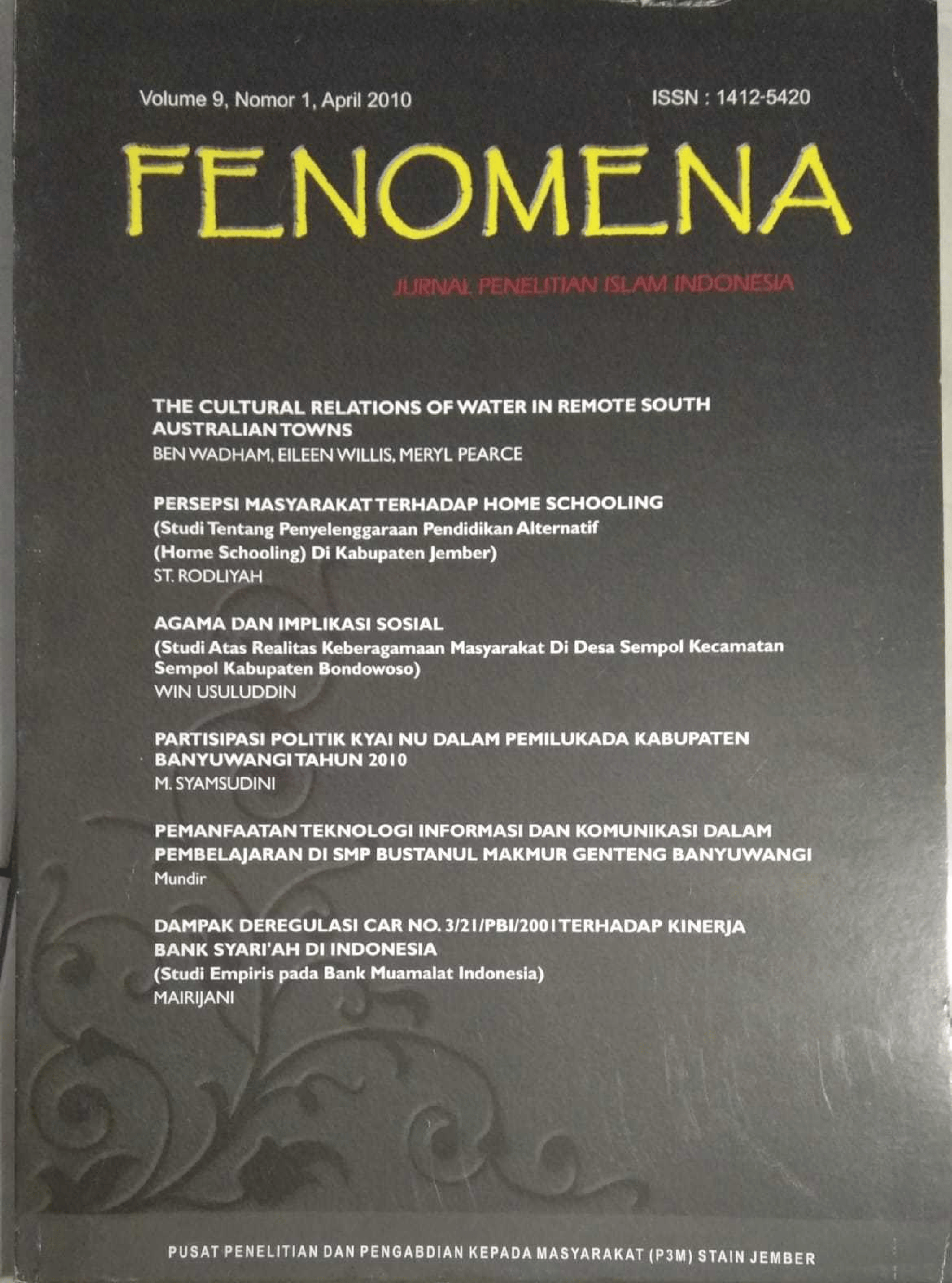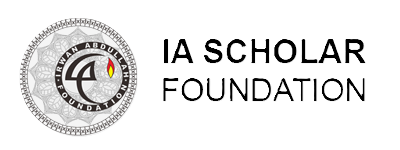The Cultural Relations of Water in Remote South Australian Towns
DOI:
https://doi.org/10.35719/fenomena.v9i1.458Keywords:
water, culture, commodification, water flows, sustainability, air, budaya, komodifikasi, aliran air, keberlanjutanAbstract
Water is a natural resource that is becoming increasingly scarce, and declining rainfall forces communities to adapt to living in drought and significantly different environmental and social conditions. In remote residential areas of South Australia, water tends to be the only natural resource used daily, requiring them to pay attention to their relationship with water, access, and adequacy. These are the issues that need consideration. However, lifestyles, identity, sense of belonging, and community have been shaped by the presence of water in daily habits. Water also becomes a social issue, and its management arises in cultural relations.
Air adalah sumber alam yang semakin jarang ditemukan, dan penurunan curah hujan menyebabkan masyarakat harus beradaptasi untuk hidup dalam kekeringan, serta kondisi lingkungan dan sosial yang sangat berbeda. Pada perumahan penduduk di Australia Selatan yang terpencil, air cenderung sebagai satu-satunya sumber alam yang dipergunakan sehari-hari sehingga mengharuskan mereka memperhatikan hubungan mereka terhadap air, akses, serta kecukupannya. Inilah hal-hal yang perlu diperhatikan. Akan tetapi, gaya hidup, identitas, rasa memiliki, dan komunitas telah sedemikian terbentuk dengan adanya air dalam kebiasaan setiap orang. Air juga menjadi masalah sosial, dan pengaturannya timbul dalam hubungan budaya.
Downloads
References
Alston, M., & Mason, R. (2008). Who determines access to Australia’s water? Social flow, gender, citizenship, and stakeholder priorities in the Australian water debate. Rural Society, 18(3), 215-219.
Alston, M., & Mason, R. (2008). Who turns the taps off? Introducing social flow to the Australian water debate. Rural Society, 18(2), 131-139.
Bourdieu, P. (1977). Outline of a Theory of Practice. Cambridge: Cambridge University Press.
Bourdieu, P. (1985). The Social Space and the Genesis of Groups. Theory and Society, 14(6), 723-744.
Bourdieu, P. (1988). Homo Academicus. Cambridge: Polity Press.
CSIRO. (n.d.). Howard River environmental flows and social values: A project to support water planning in the Howard River catchment. CSIRO Sustainable Ecosystems, NT. Retrieved from http://www.terc.csiro.au/resources%5CHowardRiver_Flows_A4.pdf
Dean, M., & Hindess, B. (1998). Government, Liberalism, Society. In M. Dean & B. Hindess (Eds.), Governing Australia: Studies in Contemporary Rationalities of Government. Cambridge University Press.
Douglas, M. (2002). Purity and Danger: An Analysis of the Concepts of Pollution and Taboo. London: Routledge Classics.
McKay, J., & Bjornlund, H. (2001). Recent Australian market mechanisms as a component of an environmental policy that can make choices between sustainability and social justice. Social Justice Research, 14(4), 387-403.
Nancarrow, B. E., & Syme, G. J. (2001). Challenges in implementing justice research in the allocation of natural resources. Social Justice Research, 14(4), 441-452.
Nathan, E. (2007). Lost waters: A history of a troubled catchment. Carlton, Vic: Melbourne University Press.
Syme, G. J., & Nancarrow, B. E. (2001). Social justice and environmental management: An introduction. Social Justice Research, 14(4), 343-347.
Young, I. M. (1990). The Ideal of Community and the Politics of Difference. In L. J. Nicholson (Ed.), Feminism/Postmodernism. New York: Routledge.
Downloads
Published
Issue
Section
License
Copyright (c) 2010 Ben Wadham, Eileen Willis, Meryl Pearce

This work is licensed under a Creative Commons Attribution-NonCommercial 4.0 International License.















